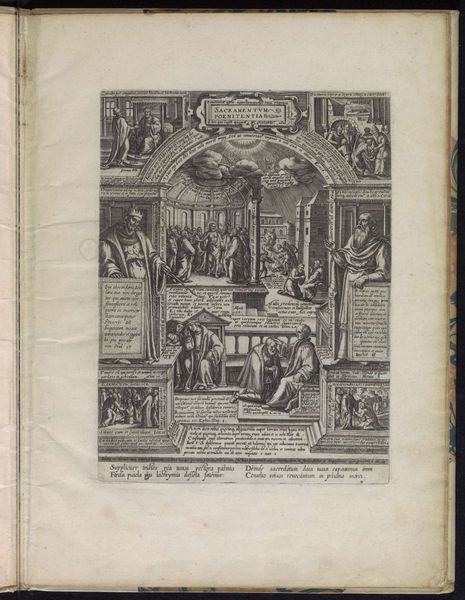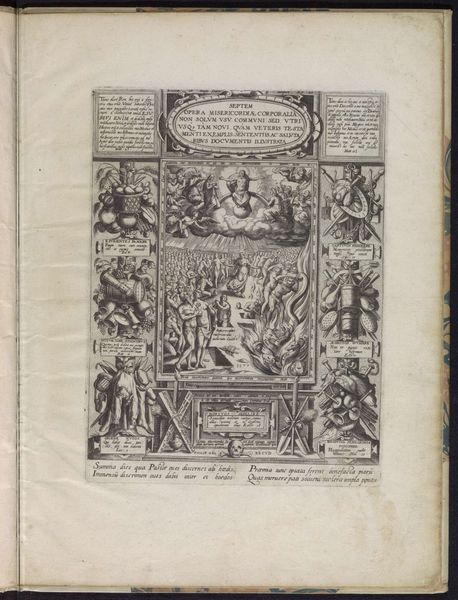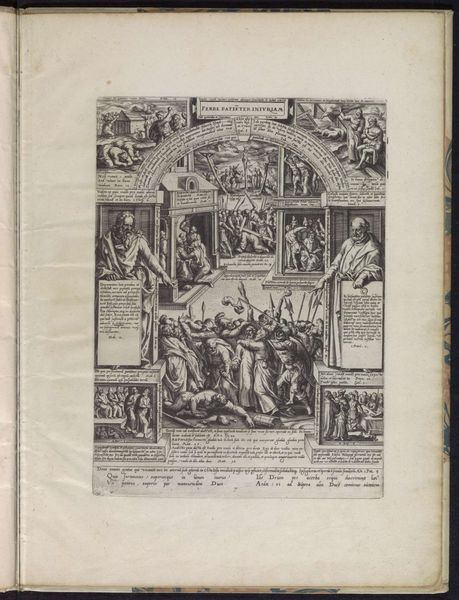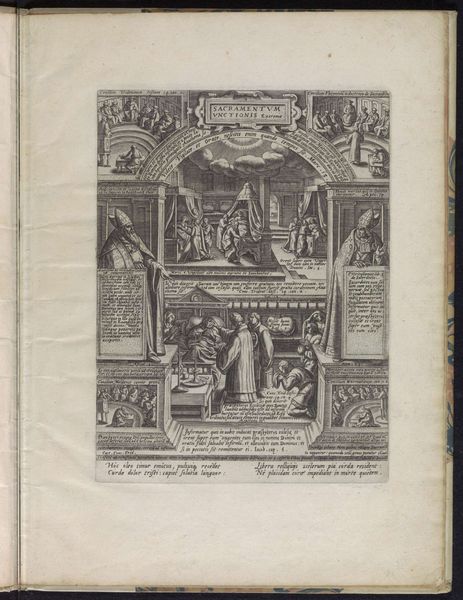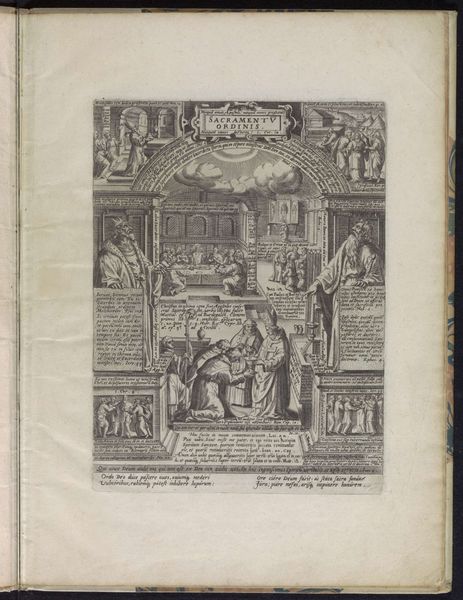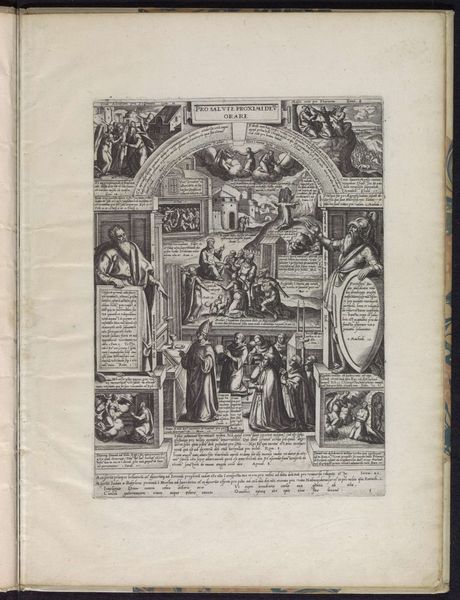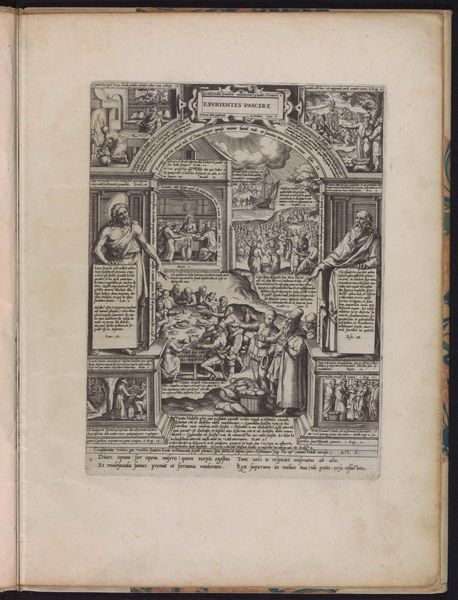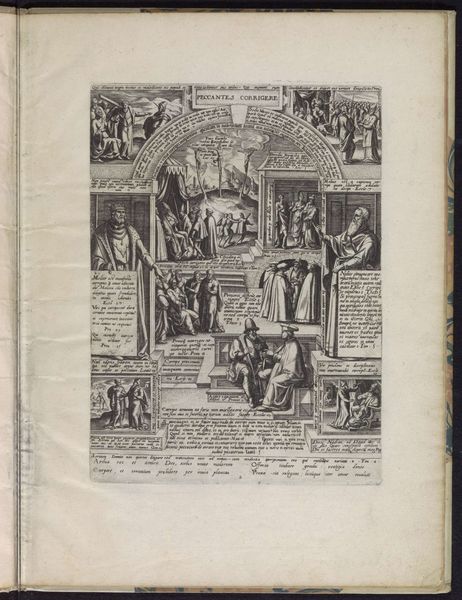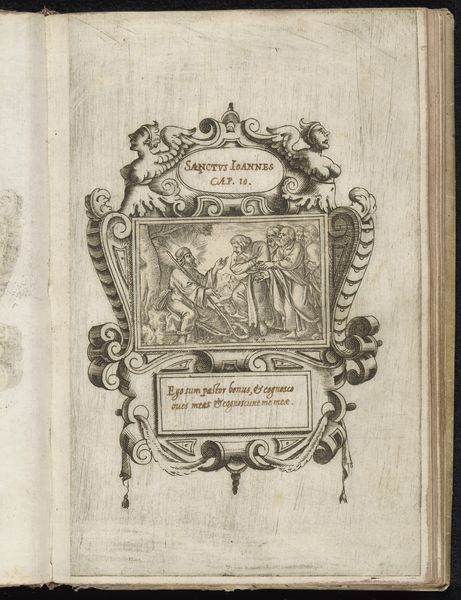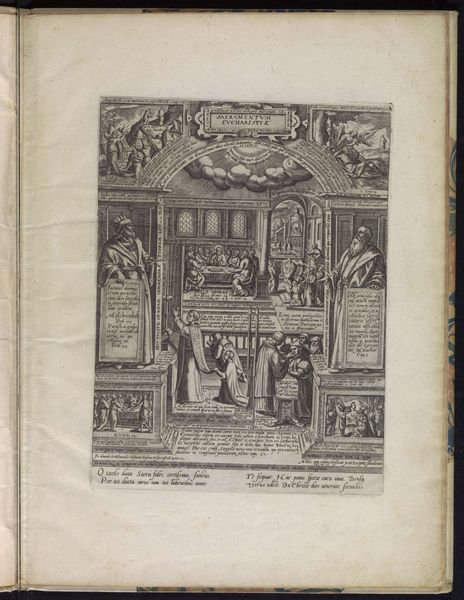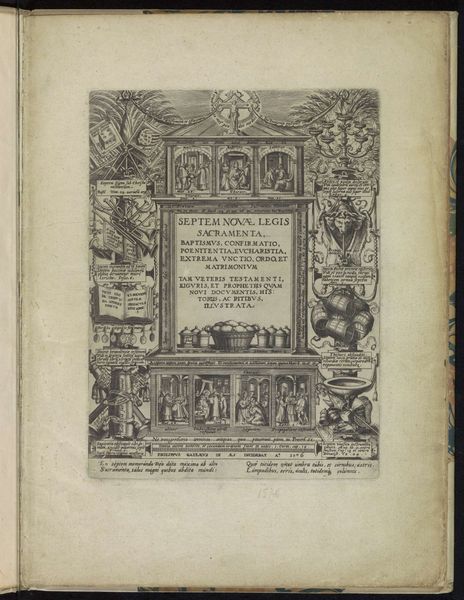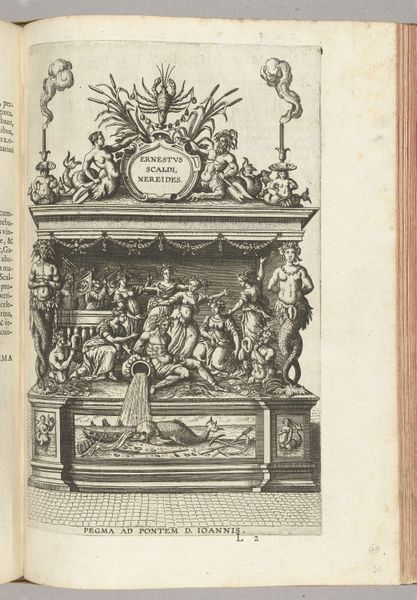
drawing, print, paper, ink, engraving
#
drawing
#
aged paper
#
toned paper
#
narrative-art
# print
#
pen sketch
#
sketch book
#
figuration
#
paper
#
personal sketchbook
#
ink
#
pen-ink sketch
#
pen work
#
sketchbook drawing
#
history-painting
#
northern-renaissance
#
sketchbook art
#
engraving
#
watercolor
Dimensions: height 257 mm, width 192 mm, height 375 mm, width 275 mm
Copyright: Rijks Museum: Open Domain
Editor: This is Philips Galle’s "Burial of the Dead," an engraving from 1577, currently held at the Rijksmuseum. There's such a density of figures and imagery packed into this small space. What kind of stories and symbols are interwoven here? Curator: The imagery speaks volumes about the anxieties of death and salvation in the 16th century. Galle has embedded several symbolic layers: the physical act of burial, yes, but also ideas about mortality, earthly life, and spiritual hope. See how the central scene echoes images of Christ's entombment, linking common humanity with divine narratives? What effect does that cultural memory have, do you think? Editor: It connects the everyday experience of death to a much larger religious context. So, it’s not just about the end of life, but a transition? Curator: Precisely. And observe how death isn’t represented as a purely negative event. The surrounding scenes—what do they suggest to you? Editor: They seem to depict various acts of charity and piety. Does that mean performing good deeds offers some solace or redemption in the face of death? Curator: That’s one reading. Look at the figures of authority framing the image. These 'pillars' seem to be judging or witnessing, representing moral authority, and, thus, society's and God’s gaze on one’s actions. So Galle uses symbolism, placing everyday anxieties within complex philosophical frameworks. Death, a very universal theme, has, here, its own cultural inflection. Fascinating, isn’t it? Editor: It truly is! I had been seeing a crowded image of a morbid theme, but now understand its place within both historical anxieties and overarching moral traditions. Thanks for sharing the context with me!
Comments
No comments
Be the first to comment and join the conversation on the ultimate creative platform.
